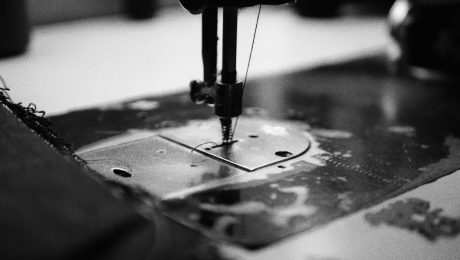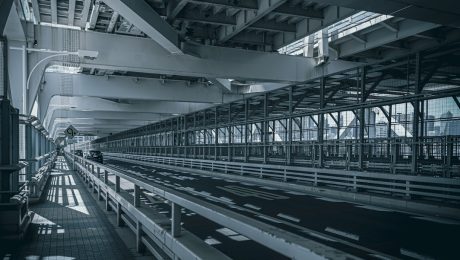The pursuit of zero-defect production is a challenging yet rewarding endeavor. It’s a philosophy that transcends simply reducing defects; it’s about fostering a culture of continuous improvement, proactive problem-solving, and unwavering commitment to quality. While achieving absolute zero defects might be theoretically impossible, striving for it drives significant improvements in efficiency, customer satisfaction, and profitability. This post explores the key aspects of implementing and maintaining a zero-defect production strategy.
Understanding the Zero-Defect Mindset
The foundation of zero-defect production lies in a fundamental shift in mindset. It’s not about simply inspecting for defects at the end of the production line; it’s about preventing them from occurring in the first place. This requires a proactive approach, focusing on identifying potential problem areas before they lead to defects. Employees at all levels must be empowered to identify and report potential issues, and management must create a culture where defect reporting is encouraged, not punished. This shift involves embracing a philosophy of continuous improvement, where every process is constantly evaluated and refined to eliminate potential sources of error.
Implementing Robust Quality Control Systems
Effective quality control is paramount to achieving zero-defect goals. This goes beyond simple inspections; it involves implementing a multi-layered system that encompasses various stages of the production process. This might include:
- Incoming Material Inspection: Ensuring that raw materials meet the required specifications before they enter the production process.
- In-Process Control: Regular checks throughout the production process to identify and correct deviations early on.
- Statistical Process Control (SPC): Utilizing statistical methods to monitor and control the production process, identifying trends and potential problems before they become significant.
- Final Product Inspection: A final check to ensure that the finished product meets all quality standards.
Implementing a robust quality management system (QMS), such as ISO 9001, can provide a framework for these processes.
Leveraging Lean Manufacturing Principles
Lean manufacturing principles are highly compatible with zero-defect production goals. By eliminating waste and streamlining processes, lean manufacturing reduces the opportunities for defects to occur. Key lean principles applicable include:
- Value Stream Mapping: Identifying and eliminating non-value-added steps in the production process.
- 5S Methodology: Organizing the workplace to improve efficiency and reduce errors (Sort, Set in Order, Shine, Standardize, Sustain).
- Kaizen (Continuous Improvement): Continuously seeking small, incremental improvements to processes.
- Just-in-Time (JIT) Inventory: Reducing inventory levels to minimize waste and improve efficiency.
By adopting these principles, companies can create a more efficient and less error-prone production environment.
Empowering Employees Through Training and Engagement
A crucial element of achieving zero-defect goals is empowering employees at all levels. This requires providing comprehensive training on quality control procedures, problem-solving techniques, and the importance of their role in achieving the overall goal. Creating a culture of open communication and feedback is essential. Employees should feel comfortable reporting potential problems without fear of reprisal. Incentivizing quality improvement through recognition programs and bonuses can further enhance employee engagement and commitment to achieving zero-defect goals.
Continuous Monitoring and Improvement
Achieving zero-defect production is not a one-time achievement; it’s an ongoing process of continuous monitoring and improvement. Regularly reviewing key performance indicators (KPIs) such as defect rates, customer complaints, and production efficiency is crucial. This data provides valuable insights into areas for improvement. Regularly analyzing this data, coupled with employee feedback and process audits, allows for the identification of root causes of defects and the implementation of corrective actions. This iterative process of monitoring, analysis, and improvement is essential for maintaining zero-defect production goals over the long term.
In conclusion, achieving zero-defect production goals requires a holistic approach that encompasses a change in mindset, robust quality control systems, lean manufacturing principles, empowered employees, and continuous monitoring and improvement. While perfect results might be elusive, the relentless pursuit of this goal leads to significant improvements in efficiency, quality, and customer satisfaction.
Tags: zero defect, zero defect manufacturing, quality control, process improvement, lean manufacturing
body { font-family: sans-serif; line-height: 1.6; }
h1, h2, h3 { color: #333; }
img { max-width: 100%; height: auto; }
The word “round” evokes a sense of completeness, wholeness, and continuous flow. But its significance extends far beyond a simple description of shape. From the precise calculations of mathematicians to the artistic expressions of designers, the concept of “round” permeates various aspects of our lives. This exploration delves into the multifaceted nature of roundness, exploring its mathematical foundations, symbolic interpretations, and practical applications.
The Geometry of Roundness: Circles and Spheres
In geometry, “round” is primarily associated with circles and spheres. A circle is defined as a set of points equidistant from a central point, the radius. This simple definition leads to a wealth of mathematical properties, including circumference, area, and the intriguing relationship between the diameter and the circumference (π). The circle’s perfect symmetry and continuous nature have captivated mathematicians for millennia, leading to countless theorems and applications in various fields, from calculus to trigonometry. Moving into three dimensions, we encounter the sphere, a three-dimensional analogue of the circle, possessing similar properties of symmetry and continuous curvature. Understanding the geometry of round shapes is fundamental to fields like engineering, architecture, and even astronomy.
Roundness in Nature: From Planetary Orbits to Biological Forms
The prevalence of round shapes in nature is striking. Planetary orbits, to a first approximation, are elliptical, which are themselves related to circles. Many celestial bodies, including planets and stars, are remarkably spherical due to the gravitational forces acting upon them. On a smaller scale, we observe roundness in numerous biological forms. The spherical shape of cells, the circular arrangement of petals in some flowers, and the nearly perfect spheres of many fruits and seeds all exemplify the efficiency and elegance of round forms in biological systems. This prevalence suggests that roundness offers inherent advantages in terms of structural integrity, surface area-to-volume ratio, and efficient resource allocation.
The Symbolic Power of Roundness: Completeness and Infinity
Beyond its mathematical and scientific significance, “round” carries profound symbolic weight across various cultures and belief systems. The circle often represents completeness, wholeness, and the cyclical nature of life and time. Many ancient cultures viewed the circle as a symbol of the cosmos, representing the continuous and unending flow of existence. The mandala, a complex geometric design often featuring circles, is used in various spiritual practices as a tool for meditation and contemplation, reflecting the circle’s association with inner peace and harmony. Similarly, the ouroboros, a serpent eating its own tail, symbolizes infinity and the cyclical nature of creation and destruction.
Roundness in Design and Aesthetics: Harmony and Balance
The aesthetic appeal of round shapes is undeniable. In design, circles and spheres are frequently employed to create a sense of harmony, balance, and visual appeal. From the elegant curves of architectural designs to the smooth contours of furniture and product design, round shapes contribute to a feeling of softness, fluidity, and visual comfort. The use of round shapes in logos and branding is also widespread, often conveying messages of unity, completeness, and global reach. The strategic use of round elements can significantly impact the overall aesthetic and perceived functionality of a design.
The Practical Applications of Round Objects: From Wheels to Lenses
The practical applications of round shapes are vast and varied. The invention of the wheel, arguably one of humanity’s most significant technological advancements, revolutionized transportation and countless other aspects of life. The circular shape of the wheel minimizes friction and allows for efficient movement. Similarly, the spherical shape of ball bearings reduces friction in mechanical systems. Roundness also plays a crucial role in optics, with lenses and mirrors often employing spherical or parabolic surfaces to focus or reflect light. From the precision engineering of machinery to the intricate designs of optical instruments, the properties of round shapes are essential to numerous technological advancements.
In conclusion, the seemingly simple concept of “round” reveals a depth and complexity that extends far beyond its basic geometric definition. Its significance in mathematics, nature, symbolism, design, and technology underscores its enduring presence and influence in our world. Understanding the multifaceted nature of roundness allows us to appreciate its beauty, power, and pervasive impact on our lives.
SEO-Friendly Tags:
- Round
- Circle
- Sphere
- Circular Geometry
- Symbolism of Round Shapes
Modern architecture demands innovative solutions that blend structural integrity with aesthetic appeal. In this pursuit, IPE beams have emerged as a prominent choice, offering a unique combination of strength, versatility, and sustainability. This comprehensive guide delves into the world of IPE beams, exploring their role in contemporary building design and highlighting their key advantages.
The Strength and Structural Integrity of IPE Beams
IPE beams, also known as Parallel Flange Beams, are hot-rolled steel beams with a characteristic I-shape profile. This profile maximizes their strength-to-weight ratio, making them exceptionally efficient for supporting heavy loads over significant spans. Their parallel flanges provide superior stability and resistance to bending, crucial in modern architectural designs that often feature expansive open-plan spaces and large cantilevered elements. The precise manufacturing process ensures consistent quality and predictable performance, allowing architects to accurately model structural behavior and optimize designs for maximum efficiency. This predictability also reduces the need for excessive reinforcement, contributing to cost savings and a more streamlined construction process. Different IPE beam sizes are available, catering to diverse structural needs, from small residential projects to large-scale commercial developments.
Aesthetic Appeal and Design Flexibility of IPE Beams
Beyond their structural capabilities, IPE beams offer significant aesthetic advantages. Their clean, linear profile lends itself seamlessly to modern architectural styles, complementing minimalist designs and industrial aesthetics. The exposed steel adds a touch of industrial chic, creating a visually striking element within the interior or exterior design. Furthermore, IPE beams can be easily integrated into various finishes. They can be left exposed with a protective coating to showcase the raw steel, painted to match the overall color scheme, or even clad with wood or other materials to create a unique aesthetic. This versatility allows architects to tailor the appearance of the beams to complement the overall design vision, ensuring a cohesive and visually appealing structure.
Sustainability and Environmental Impact of IPE Beams
In today’s environmentally conscious world, the sustainability of building materials is a crucial consideration. Steel, the primary component of IPE beams, is a highly recyclable material. This significantly reduces the environmental impact compared to materials with lower recyclability rates. Moreover, the long lifespan and durability of IPE beams contribute to their overall sustainability. Their robust construction ensures they can withstand significant stresses and environmental factors, minimizing the need for replacements or repairs over time. This longevity reduces the overall demand for new materials and minimizes the associated carbon footprint, making IPE beams a responsible choice for environmentally conscious architects and builders.
IPE Beams in Different Architectural Applications
The versatility of IPE beams makes them suitable for a wide range of architectural applications. They are commonly used in:
- Residential buildings: Supporting floors, roofs, and balconies in homes and apartments.
- Commercial buildings: Creating open-plan spaces in offices, retail outlets, and shopping malls.
- Industrial buildings: Supporting heavy machinery and equipment in factories and warehouses.
- Public buildings: Providing structural support in museums, libraries, and other public spaces.
- Infrastructure projects: Used in bridges, walkways, and other infrastructure elements.
Their adaptability to various project scales and design styles contributes to their widespread adoption across the architectural landscape.
Cost-Effectiveness and Construction Efficiency of IPE Beams
While the initial cost of IPE beams might seem higher than some alternative materials, their superior strength-to-weight ratio often translates to significant long-term cost savings. The reduced need for additional reinforcement and the faster construction times due to their ease of installation contribute to overall project efficiency. Furthermore, the precise engineering and manufacturing of IPE beams minimize material waste during construction, further enhancing cost-effectiveness. The long lifespan and low maintenance requirements further reduce the overall lifecycle cost, making IPE beams a financially sound investment for many architectural projects.
In conclusion, IPE beams offer a compelling combination of structural integrity, aesthetic appeal, sustainability, and cost-effectiveness, making them a valuable asset in modern architectural design. Their versatility and adaptability allow them to be seamlessly integrated into a wide range of projects, contributing to innovative and sustainable structures.
Tags: IPE beams, steel beams, modern architecture, structural steel, sustainable building materials
Cold drawn round steel bars are a cornerstone of countless industries, providing exceptional strength, precision, and durability. This comprehensive guide will delve into the intricacies of these versatile materials, exploring their manufacturing process, mechanical properties, diverse applications, and key specifications.
The Cold Drawing Process: Shaping Strength and Precision
Unlike hot-rolled steel bars, which are shaped at high temperatures, cold drawn steel bars undergo a process of deformation at room temperature. This involves pulling a pre-rolled bar through a series of dies with progressively smaller diameters. This controlled deformation significantly alters the material’s microstructure, leading to enhanced mechanical properties. The process involves several key steps:
- Pickling: The initial bar is cleaned to remove scale and impurities.
- Drawing: The bar is pulled through a series of dies, reducing its diameter and improving surface finish.
- Straightening: The drawn bar is straightened to ensure dimensional accuracy.
- Cutting to Length: The bars are cut to the specified lengths.
The cold drawing process induces significant strain hardening, resulting in increased tensile strength, yield strength, and hardness. This also improves the surface finish, making cold drawn bars ideal for applications requiring precise dimensions and a smooth surface.
Exceptional Mechanical Properties: The Foundation of Performance
Cold drawn round steel bars boast superior mechanical properties compared to their hot-rolled counterparts. These properties are crucial for determining the bar’s suitability for specific applications. Key mechanical properties include:
- Tensile Strength: This measures the maximum stress the bar can withstand before fracturing. Cold drawing significantly increases tensile strength.
- Yield Strength: This indicates the stress at which the bar begins to deform permanently. Higher yield strength ensures greater resistance to deformation under load.
- Hardness: Cold drawing increases hardness, improving wear resistance and durability.
- Ductility: While cold drawing increases strength, it generally reduces ductility (the ability to deform before fracturing). However, this reduction is often acceptable given the other benefits.
Precise control over the drawing process allows manufacturers to tailor the mechanical properties to meet specific application requirements.
Diverse Applications: Where Strength Meets Precision
The combination of high strength, precision dimensions, and excellent surface finish makes cold drawn round steel bars indispensable in a wide range of industries. Some key applications include:
- Automotive: Used in axles, shafts, and other critical components requiring high strength and durability.
- Construction: Employed in reinforcing bars, structural components, and machinery parts.
- Machinery Manufacturing: Forms the basis for shafts, spindles, pins, and other precision-engineered components.
- Aerospace: Utilized in high-strength, lightweight components where reliability is paramount.
- Hydraulic and Pneumatic Systems: Used in cylinders, pistons, and other components requiring resistance to high pressures.
The versatility of cold drawn round steel bars extends to numerous other sectors, highlighting their importance in modern manufacturing.
Understanding Steel Bar Specifications: Decoding the Numbers
Selecting the appropriate cold drawn round steel bar requires careful consideration of its specifications. These specifications typically include:
- Diameter: Available in a wide range of diameters, from millimeters to inches.
- Length: Can be supplied in standard lengths or cut to custom specifications.
- Grade: Different steel grades offer varying mechanical properties, such as tensile strength and yield strength. Common grades include 1018, 1045, and 4140.
- Surface Finish: The surface finish can range from bright (highly polished) to black (less polished).
- Tolerance: Specifies the allowable deviation from the nominal diameter.
Understanding these specifications is critical for ensuring the selected bar meets the requirements of the intended application.
Advantages of Cold Drawn Round Steel Bars: Why Choose Cold Drawn?
The advantages of using cold drawn round steel bars are numerous and contribute to their widespread adoption across various industries:
- High Strength and Hardness: Superior to hot-rolled bars, offering greater resistance to wear and deformation.
- Excellent Surface Finish: Reduces friction and improves the aesthetic appeal of finished products.
- Precise Dimensions: Minimizes machining requirements and enhances component accuracy.
- Improved Machinability: The enhanced surface finish and microstructure can lead to improved machinability in certain cases.
- Cost-Effectiveness: While the initial cost might be slightly higher than hot-rolled bars, the superior properties often lead to cost savings in downstream processing and reduced material waste.
These advantages make cold drawn round steel bars a cost-effective and high-performance solution for a wide array of engineering applications.
In conclusion, cold drawn round steel bars represent a crucial material in modern engineering and manufacturing. Their superior mechanical properties, precise dimensions, and excellent surface finish make them ideal for demanding applications across numerous industries. Understanding the nuances of their manufacturing process and specifications is key to harnessing their full potential.
SEO Tags:
cold drawn steel bars, round steel bars, steel bar specifications, steel bar applications, cold drawing process
The steel industry, a cornerstone of global infrastructure and manufacturing, is constantly evolving. Understanding the current sector news and prevailing trends is crucial for businesses, investors, and policymakers alike. This in-depth analysis explores the key factors shaping the steel landscape, offering insights into its dynamic nature and future trajectory.
Price Volatility and Market Fluctuations
Steel prices are notoriously volatile, influenced by a complex interplay of supply and demand, raw material costs (primarily iron ore and coking coal), and global economic conditions. Recent news highlights significant price swings, often driven by factors such as unexpected production disruptions (e.g., mill closures due to maintenance or unforeseen events), changes in government policies (including tariffs and trade agreements), and fluctuating energy prices. For example, the recent surge in energy costs has significantly impacted production costs, leading to price increases. Conversely, periods of economic slowdown can dampen demand, resulting in price decreases. Analyzing historical price data and understanding the underlying economic factors are critical for predicting future price movements and mitigating risks.
Global Production Capacity and Expansion
Global steel production capacity is constantly expanding, primarily driven by increasing demand from emerging economies, particularly in Asia. However, this expansion isn’t uniform. Some regions are witnessing significant capacity additions through new greenfield projects and upgrades to existing facilities, while others are facing capacity constraints due to various factors, including environmental regulations and limitations on raw material availability. News from major steel-producing countries often highlights these capacity changes. For instance, China, the world’s largest steel producer, has implemented policies aimed at controlling overcapacity while simultaneously investing in modernizing its steel industry. Understanding these global capacity trends is key to assessing future supply availability and its impact on price dynamics.
Sustainability and Environmental Concerns
The steel industry is a significant contributor to global carbon emissions. Increasingly, environmental concerns are driving significant changes within the sector. News stories frequently feature the industry’s efforts to reduce its carbon footprint through various initiatives, including the adoption of more efficient production technologies, the use of alternative raw materials (such as scrap steel), and the development of carbon capture and storage (CCS) technologies. Pressure from investors, consumers, and regulators is pushing steel producers to embrace sustainable practices. The transition to a more sustainable steel industry is a long-term process, but the current news reveals a growing commitment to reducing emissions and improving environmental performance.
Technological Advancements and Automation
Technological advancements are revolutionizing the steel industry, driving improvements in efficiency, productivity, and product quality. Automation is becoming increasingly prevalent, with robotic systems and advanced control technologies being implemented across various stages of the steelmaking process. News often highlights the adoption of artificial intelligence (AI) and machine learning (ML) to optimize production processes, predict equipment failures, and improve quality control. These technological advancements are not only enhancing efficiency but also enabling the production of higher-quality steel products with improved properties. Companies that embrace these technologies are likely to gain a competitive edge in the market.
Geopolitical Influences and Trade Dynamics
Geopolitical events and trade policies significantly impact the steel industry. Trade disputes, sanctions, and tariffs can disrupt supply chains, influence steel prices, and reshape global trade patterns. News related to international trade agreements, geopolitical tensions, and government regulations often has a direct bearing on the steel sector. For example, changes in trade relations between major steel-producing and consuming countries can lead to shifts in steel imports and exports, affecting prices and market share. Understanding the geopolitical landscape and its potential impact on trade flows is essential for navigating the complexities of the global steel market.
The steel industry is a dynamic and complex sector, constantly adapting to changing market conditions, technological advancements, and geopolitical influences. By closely monitoring sector news and understanding the prevailing trends discussed above, stakeholders can make informed decisions and navigate the challenges and opportunities that lie ahead.
SEO-Friendly Tags:
- Steel Industry News
- Steel Market Trends
- Steel Price Analysis
- Steel Production Capacity
- Sustainable Steel
body { font-family: sans-serif; line-height: 1.6; }
h1, h2, h3 { color: #333; }
img { max-width: 100%; height: auto; }
The construction industry is undergoing a significant transformation, driven by the increasing demand for faster, more efficient, and sustainable building solutions. Prefabricated steel buildings are at the forefront of this revolution, offering a compelling alternative to traditional construction methods. This post delves into the exciting innovations shaping the future of prefab steel structures, exploring advancements that are improving efficiency, durability, and sustainability.
Sustainable Steel: Eco-Friendly Prefab Construction
Sustainability is no longer a niche concern; it’s a core principle driving innovation across all industries, including construction. Prefab steel buildings are inherently more sustainable than many traditional methods. Steel is a highly recyclable material, contributing to a circular economy. Furthermore, advancements in steel production are reducing its carbon footprint. The use of recycled steel content in prefab structures is becoming increasingly common, minimizing the environmental impact of new steel production. Beyond the material itself, the precision manufacturing of prefab components minimizes waste on-site, further enhancing the environmental benefits. Innovations in insulation techniques, such as the integration of high-performance insulation panels within the steel framework, further improve energy efficiency in the finished building, reducing long-term operational costs and environmental impact.
Advanced Design & Engineering: Pushing the Boundaries of Steel Structures
Modern design software and advanced engineering techniques are enabling architects and engineers to create increasingly complex and aesthetically pleasing prefab steel buildings. Building Information Modeling (BIM) plays a crucial role, allowing for precise coordination of all components before construction even begins. This reduces errors, delays, and material waste. Furthermore, advancements in computational design allow for the creation of intricate, optimized steel structures, maximizing strength while minimizing material usage. This translates to lighter, more efficient buildings that can withstand extreme weather conditions and seismic activity. The use of parametric design allows for easy customization and adaptation of designs to specific client needs and site conditions, making prefab steel structures highly versatile.
Smart Building Integration: Technology Enhancing Functionality
The integration of smart building technologies is transforming prefab steel structures into intelligent, responsive environments. Sensors, IoT devices, and automation systems can be seamlessly integrated into the design and construction process. This enables real-time monitoring of energy consumption, environmental conditions, and security systems. Smart features such as automated lighting, climate control, and security systems enhance occupant comfort, safety, and operational efficiency. The data collected by these systems can also provide valuable insights for optimizing building performance and reducing operational costs over the building’s lifespan. This integration of technology not only enhances the functionality but also increases the value proposition of prefab steel buildings.
Modular Construction & Rapid Deployment: Speeding Up the Building Process
Modular construction is a key aspect of prefab steel building innovation. This approach involves prefabricating entire building modules—sections or even entire floors—in a controlled factory environment. These modules are then transported to the construction site and assembled quickly and efficiently. This significantly reduces construction time compared to traditional methods, allowing for faster project completion and reduced overall costs. The modular approach also minimizes disruption to the surrounding environment, making it ideal for urban construction projects. Advancements in transportation and assembly techniques are further streamlining the modular construction process, making it increasingly efficient and cost-effective.
Cost-Effective Solutions: Balancing Quality and Affordability
While the initial investment in prefab steel buildings might seem higher than traditional construction, the long-term cost benefits are substantial. The reduced construction time, minimized labor costs, and efficient use of materials contribute to significant savings. The durability and longevity of steel structures also reduce maintenance and repair costs over the building’s lifespan. Furthermore, the precision manufacturing of components minimizes waste and errors, leading to cost savings compared to traditional construction, where material waste and rework are common. The combination of speed, efficiency, and durability makes prefab steel buildings a highly cost-effective solution for a wide range of applications, from commercial and industrial buildings to residential structures.
Prefabricated steel buildings are transforming the construction landscape, offering sustainable, efficient, and cost-effective solutions. The innovations discussed above represent just a glimpse of the exciting possibilities that lie ahead. As technology continues to advance, we can expect even more groundbreaking developments in this dynamic sector.
SEO Tags:
prefab steel buildings, modular construction, sustainable construction, steel building innovations, smart buildings
body {
font-family: sans-serif;
line-height: 1.6;
}
h1, h2, h3 {
color: #333;
}
h1 {
font-size: 2.5em;
}
h2 {
font-size: 2em;
}
h3 {
font-size: 1.5em;
}
Cold drawn flat bars are a ubiquitous component in various industries, known for their exceptional precision, strength, and surface finish. This comprehensive guide delves into the world of cold drawn flat bars, exploring their manufacturing process, properties, applications, advantages, and specifications. Understanding these aspects is crucial for engineers, manufacturers, and anyone working with these versatile materials.
The Manufacturing Process of Cold Drawn Flat Bars
The creation of cold drawn flat bars begins with hot-rolled steel. These hot-rolled bars are initially rough and possess a relatively low surface finish. The cold drawing process refines this initial state. The hot-rolled bar is first pickled, a process of removing surface oxides to improve the final product’s quality. Subsequently, it’s passed through a series of dies under high pressure. This process, performed at room temperature, reduces the cross-sectional area of the bar, resulting in increased tensile strength, improved dimensional accuracy, and a superior surface finish. The precise control over the drawing process allows for the creation of flat bars with tight tolerances, making them ideal for applications requiring high precision.
Exceptional Properties of Cold Drawn Flat Bars
Cold drawing significantly enhances the mechanical properties of the steel. The process induces work hardening, leading to increased tensile strength, yield strength, and hardness compared to hot-rolled counterparts. This enhanced strength makes them suitable for applications demanding high load-bearing capacity. Furthermore, cold drawing results in a superior surface finish, reducing the need for secondary machining in many cases. This smooth surface is less prone to corrosion and improves fatigue resistance, extending the lifespan of the component. The improved dimensional accuracy also reduces material waste and simplifies assembly processes.
Diverse Applications Across Industries
The exceptional properties of cold drawn flat bars make them suitable for a wide range of applications across various industries. In the automotive industry, they are frequently used in chassis components, suspension systems, and steering mechanisms, where high strength and precision are paramount. The construction industry utilizes cold drawn flat bars in structural elements, reinforcement bars, and various fabricated components. The machinery industry employs them in precision parts, machine tools, and other applications requiring high dimensional accuracy and fatigue resistance. Furthermore, they find applications in the aerospace, railway, and agricultural industries, highlighting their versatility and adaptability.
Advantages of Choosing Cold Drawn Flat Bars
Several key advantages contribute to the widespread use of cold drawn flat bars. Their high tensile strength and yield strength make them highly reliable in demanding applications. The superior surface finish reduces the need for further machining, saving time and cost. The improved dimensional accuracy simplifies assembly and reduces material waste. The enhanced fatigue resistance extends the lifespan of components, reducing maintenance costs. Finally, the availability in various grades of steel allows for selection based on specific application requirements, offering flexibility and customization.
Specifications and Material Grades of Cold Drawn Flat Bars
Cold drawn flat bars are available in various specifications and material grades, catering to diverse applications. Common steel grades include low carbon steel, medium carbon steel, and high carbon steel, each offering a different balance of strength, ductility, and machinability. Specifications typically include dimensions (length, width, thickness), tolerances, surface finish requirements, and mechanical properties. Choosing the appropriate grade and specifications is crucial to ensure the component’s performance and longevity. Detailed specifications are typically provided by manufacturers and are essential for selecting the right material for a given application. Compliance with relevant industry standards is also paramount for ensuring quality and reliability.
In conclusion, cold drawn flat bars represent a highly versatile and reliable material solution for a wide spectrum of applications. Their superior properties, resulting from the cold drawing process, make them a preferred choice across various industries demanding high strength, precision, and durability. Careful consideration of the material grade and specifications is crucial for ensuring optimal performance and longevity in the intended application.
SEO Tags:
- Cold Drawn Flat Bars
- Cold Drawn Steel
- Steel Flat Bars
- Precision Steel Bars
- High Strength Steel Bars
Radiographic inspection (RT) is a crucial non-destructive testing (NDT) method used to assess the integrity of pipelines and pipes. This powerful technique utilizes penetrating radiation – either X-rays or gamma rays – to reveal internal flaws and defects that might otherwise go undetected. This blog post delves into the intricacies of radiographic inspection in pipes, exploring its applications, advantages, limitations, and safety protocols.
Understanding the Principles of Radiographic Pipe Inspection
Radiographic inspection relies on the principle of differential absorption of radiation. When a beam of X-rays or gamma rays is directed through a pipe, the radiation is absorbed differently depending on the density of the material. Areas with denser material, such as the pipe’s base metal, absorb more radiation, while areas with lower density, like internal flaws (e.g., cracks, porosity, inclusions, corrosion), absorb less. The resulting variations in radiation intensity are captured on a film or digital detector, creating a radiograph (or X-ray image) that reveals the internal structure of the pipe.
The choice between X-rays and gamma rays depends on factors like pipe thickness and accessibility. X-ray machines are generally more portable and controllable, making them suitable for smaller pipes and on-site inspections. Gamma ray sources, on the other hand, are more penetrating and can be used for thicker pipes and less accessible locations, but require more stringent safety measures.
Common Applications of Radiographic Pipe Inspection
Radiographic inspection plays a vital role in various stages of pipe manufacturing and maintenance. Some key applications include:
- Weld Inspection: Detecting flaws in welds, such as cracks, porosity, and incomplete fusion, is a primary application. This ensures the structural integrity of welded joints, crucial for preventing leaks and failures.
- Corrosion Detection: RT can identify internal corrosion that might weaken the pipe wall, posing a significant safety risk. Early detection allows for timely repairs or replacement, preventing catastrophic failures.
- Manufacturing Quality Control: RT is used during the manufacturing process to identify defects in the base metal of the pipes before they are put into service.
- In-Service Inspection: Regular radiographic inspection of pipelines in service helps assess their condition and identify any deterioration that may have occurred over time.
- Pipe Fitting Inspection: RT can examine the quality of welds and castings in pipe fittings, ensuring their proper integration into the pipeline system.
Advantages and Limitations of Radiographic Pipe Inspection
Radiographic inspection offers several advantages:
- High Sensitivity: RT can detect even small defects that might be invisible to other inspection methods.
- Permanent Record: The radiographs provide a permanent record of the pipe’s condition, allowing for future comparisons and analysis.
- Versatile: RT can be applied to a wide range of pipe materials and sizes.
- Comprehensive Inspection: RT provides a detailed view of the internal structure of the pipe, revealing defects throughout its thickness.
However, some limitations exist:
- Cost: RT can be relatively expensive compared to other NDT methods.
- Safety Concerns: Working with ionizing radiation requires strict safety protocols and trained personnel.
- Accessibility: Inspecting pipes in confined spaces or difficult-to-reach locations can be challenging.
- Limited Surface Defect Detection: While RT excels at detecting internal flaws, it may not be as effective at detecting surface defects.
Safety Precautions in Radiographic Pipe Inspection
Safety is paramount in radiographic inspection. Strict adherence to safety protocols is essential to minimize exposure to ionizing radiation. This includes:
- Radiation Shielding: Using appropriate shielding materials (e.g., lead) to protect personnel from radiation exposure.
- Distance: Maintaining a safe distance from the radiation source during exposure.
- Time Limitation: Minimizing the time spent in the radiation field.
- Personal Protective Equipment (PPE): Using radiation monitoring devices (dosimeters) and appropriate PPE, such as lead aprons and gloves.
- Trained Personnel: Only trained and certified personnel should conduct radiographic inspections.
- Regulatory Compliance: Adhering to all relevant safety regulations and licensing requirements.
Interpreting Radiographic Images and Reporting
Interpreting radiographic images requires specialized training and experience. Qualified inspectors analyze the radiographs to identify and classify any defects. The interpretation process involves recognizing various indicators of flaws, such as changes in density, shape, and size. Detailed reports are then generated, documenting the findings, the severity of any detected defects, and recommendations for corrective actions. These reports are essential for decision-making regarding repairs, replacements, or continued operation of the pipeline.
The use of advanced image processing techniques and software can enhance the accuracy and efficiency of radiographic image interpretation, allowing for quicker identification and classification of defects.
Radiographic inspection is a critical tool for ensuring the safety and reliability of pipelines. By understanding its principles, applications, advantages, limitations, and safety protocols, we can effectively utilize this technology to maintain the integrity of our critical infrastructure.
Tags: radiographic inspection, pipe inspection, pipeline inspection, NDT, non-destructive testing
Corrosion in pipes is a significant problem, leading to costly repairs, leaks, and potential environmental damage. Protecting pipelines from the ravages of rust and degradation is crucial for maintaining infrastructure integrity and longevity. Primer-coated pipes offer a robust and effective solution, significantly enhancing corrosion resistance and extending the lifespan of your piping systems. This comprehensive guide delves into the world of primer-coated pipes, exploring their benefits, applications, and the science behind their effectiveness.
Understanding the Science Behind Primer-Coated Pipes and Corrosion Resistance
Corrosion is a natural electrochemical process where a metal reacts with its environment, typically through oxidation. In the case of pipes, this often involves the interaction of iron (in steel pipes) with oxygen and moisture, leading to the formation of rust. A primer coat acts as a barrier, preventing this interaction. The primer adheres to the pipe’s surface, creating a protective layer that isolates the metal from corrosive elements. This barrier prevents the penetration of moisture and oxygen, significantly slowing down or completely halting the corrosion process. The type of primer used significantly impacts the effectiveness of this protective layer.
Types of Primers Used for Corrosion Protection on Pipes
Several types of primers are employed for pipe coating, each offering unique properties and advantages:
- Epoxy Primers: Known for their excellent adhesion, chemical resistance, and durability. They offer superior protection against a wide range of corrosive environments.
- Zinc-Rich Primers: These primers contain a high percentage of zinc particles, which provide cathodic protection. The zinc acts as a sacrificial anode, protecting the steel pipe even if the primer layer is slightly damaged.
- Acrylic Primers: Often chosen for their ease of application and good adhesion. While not as robust as epoxy or zinc-rich primers, they offer decent protection in less aggressive environments.
- Polyurethane Primers: These primers provide excellent flexibility and impact resistance, making them suitable for pipes subjected to vibration or mechanical stress.
- Coal Tar Epoxy Primers: These offer excellent resistance to soil and water, making them ideal for underground pipelines. However, environmental concerns have led to reduced use in some regions.
The Application Process of Primer Coatings on Pipes
The successful application of primer coatings is crucial for optimal corrosion protection. The process typically involves several stages:
- Surface Preparation: This is the most critical step. The pipe surface must be thoroughly cleaned to remove rust, mill scale, dirt, and other contaminants. Methods include blasting, grinding, or chemical cleaning.
- Primer Application: The primer is applied using various methods, including spraying, brushing, or dipping, depending on the pipe size, type of primer, and project requirements. Multiple coats may be necessary to achieve the desired thickness and protection.
- Curing: After application, the primer needs sufficient time to cure properly. This allows the primer to fully harden and develop its protective properties. Curing time varies depending on the primer type and environmental conditions.
- Topcoat Application (Often): In many cases, a topcoat is applied over the primer to provide additional protection and enhance the overall durability of the coating system.
Benefits of Using Primer-Coated Pipes
Investing in primer-coated pipes offers numerous benefits:
- Extended Pipe Lifespan: By preventing corrosion, primer coatings significantly extend the service life of pipes, reducing the frequency of replacements and associated costs.
- Reduced Maintenance Costs: The reduced need for repairs and replacements translates to significant savings on maintenance and downtime.
- Improved Safety: Corrosion can lead to leaks and structural failure, posing safety risks. Primer-coated pipes minimize these risks.
- Environmental Protection: Preventing corrosion reduces the release of harmful substances into the environment.
- Enhanced Reliability: Primer-coated pipes ensure consistent and reliable performance of piping systems, minimizing disruptions.
Common Applications of Primer-Coated Pipes
Primer-coated pipes find applications across various industries:
- Oil and Gas Industry: Protecting pipelines transporting hydrocarbons from corrosion is paramount. Primer-coated pipes are essential in this sector.
- Water Distribution Systems: Ensuring the integrity of water pipelines is crucial for public health. Primer coatings help prevent contamination and maintain water quality.
- Chemical Processing Plants: Pipes handling corrosive chemicals require exceptional protection, making primer coatings a vital component.
- Construction and Infrastructure Projects: Primer-coated pipes are used extensively in various construction projects, from building water systems to underground utilities.
- Marine Environments: Pipes exposed to seawater require specialized coatings with exceptional corrosion resistance, and primer coatings are often used as the foundation for these systems.
In conclusion, the use of primer-coated pipes is a strategic investment that provides long-term benefits. By understanding the science behind primer coatings, the various types available, and the application process, you can make informed decisions to protect your infrastructure and ensure its longevity. The superior corrosion resistance offered by primer-coated pipes makes them an indispensable component in numerous applications, safeguarding against costly repairs and maintaining operational efficiency.
SEO Tags: primer coated pipes, corrosion resistance, pipe coatings, corrosion protection, pipeline protection
In today’s competitive landscape, customer satisfaction is no longer a luxury; it’s a necessity. Happy customers are loyal customers, and loyal customers are the lifeblood of any successful business. This blog post will delve into the crucial aspects of implementing effective customer satisfaction initiatives, providing you with actionable strategies to elevate your business and foster lasting relationships with your clients.
1. Understanding Your Customer: The Foundation of Satisfaction
Before you can improve customer satisfaction, you need to understand your customers intimately. This goes beyond basic demographics; it requires a deep dive into their needs, pain points, and expectations. Effective methods for achieving this include:
- Conducting thorough customer surveys: Utilize both quantitative (rating scales, multiple-choice questions) and qualitative (open-ended questions, focus groups) methods to gather comprehensive feedback.
- Analyzing customer data: Leverage data from CRM systems, website analytics, and social media monitoring to identify trends and patterns in customer behavior.
- Actively listening to customer feedback: Pay close attention to reviews, comments, and direct communication from customers. Don’t just react; actively seek out and analyze this feedback.
- Creating customer personas: Develop detailed profiles of your ideal customers, encompassing their demographics, psychographics, buying habits, and motivations.
By thoroughly understanding your customer base, you can tailor your products, services, and communication to meet their specific needs and exceed their expectations.
2. Proactive Customer Service: Preventing Problems Before They Arise
Proactive customer service is about anticipating customer needs and addressing potential issues before they escalate into complaints. This involves:
- Providing self-service options: Offer comprehensive FAQs, knowledge bases, and online tutorials to empower customers to resolve issues independently.
- Implementing personalized communication: Use customer data to personalize interactions, providing relevant information and offers at the right time.
- Regularly checking in with customers: Reach out proactively to check on satisfaction, offer assistance, or gather feedback. This shows that you value their business.
- Anticipating potential issues: Analyze past customer data to identify common problems and implement preventative measures.
- Investing in employee training: Equip your customer service team with the skills and knowledge to handle various situations effectively and empathetically.
By focusing on proactive measures, you can significantly reduce the number of complaints and improve overall customer satisfaction.
3. Leveraging Technology for Enhanced Customer Experience
Technology plays a vital role in improving customer satisfaction. Effective tools and strategies include:
- Implementing a robust CRM system: Centralize customer data and interactions for a seamless and personalized experience.
- Utilizing live chat and chatbot support: Provide instant assistance and address customer queries in real-time.
- Integrating social media listening tools: Monitor social media channels for mentions of your brand and address customer concerns promptly.
- Developing a user-friendly website and mobile app: Ensure easy navigation and access to information for a positive online experience.
- Employing customer feedback management software: Streamline the process of collecting, analyzing, and responding to customer feedback.
By leveraging technology effectively, you can create a more efficient, personalized, and responsive customer experience.
4. Empowering Your Employees: The Human Touch in Customer Satisfaction
Your employees are the face of your company, and their interactions with customers directly impact satisfaction levels. To foster a customer-centric culture:
- Provide comprehensive training: Equip your employees with the skills and knowledge to handle customer interactions effectively.
- Promote a positive work environment: Happy employees are more likely to provide excellent customer service.
- Empower employees to make decisions: Give them the authority to resolve customer issues efficiently and effectively.
- Recognize and reward excellent customer service: Incentivize employees to go the extra mile for customers.
- Encourage open communication: Create a culture where employees feel comfortable sharing feedback and ideas.
Investing in your employees is an investment in your customer satisfaction.
5. Measuring and Monitoring Customer Satisfaction: Continuous Improvement
Measuring and monitoring customer satisfaction is crucial for continuous improvement. Key metrics include:
- Customer Satisfaction Score (CSAT): Measures overall satisfaction with a specific interaction or product.
- Net Promoter Score (NPS): Gauges customer loyalty and likelihood to recommend your business.
- Customer Effort Score (CES): Measures the ease of interacting with your company.
- Customer Churn Rate: Tracks the percentage of customers who stop doing business with you.
- Average Resolution Time: Measures the speed and efficiency of resolving customer issues.
Regularly tracking these metrics allows you to identify areas for improvement and measure the effectiveness of your customer satisfaction initiatives. Use data-driven insights to refine your strategies and continuously enhance the customer experience.
By implementing these customer satisfaction initiatives, you can build strong customer relationships, increase loyalty, and drive business growth. Remember that customer satisfaction is an ongoing process, requiring continuous monitoring, adaptation, and improvement.
SEO-Friendly Tags:
- Customer Satisfaction
- Customer Experience
- Customer Loyalty
- Customer Service Improvement
- Boosting Customer Satisfaction










